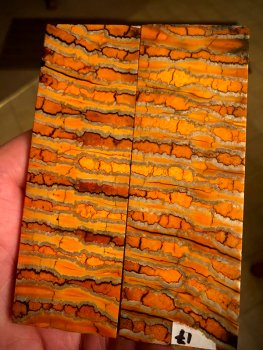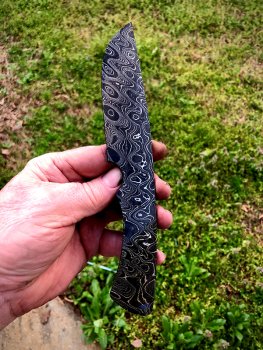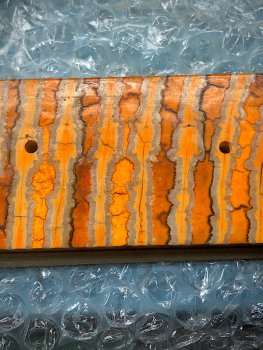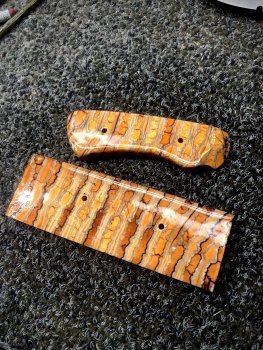No, you don't want to get those wet. There are three layers there. The pith is the softest. It's the light brown and dark brown material. It will absorb water and swell. Then your scales will start to pop apart. another layer is the dentine. It's light brown and medium in hardness, about the same hardness as ivory, in fact it is ivory. The hardest part is the enamel. It's white to grey colored, I sometimes see blue in undied teeth. It's what raises hell with your abrasives.
Don't get them wet, don't get them hot.
Sand from both sides to equalize the the heat from friction and the associated warping.
Use only sharp abrasives. The courser the better. Ceramic is the best.
If you have a variable speed sander/grinder, slower speeds are better. Disk sanders are not the best because they generally go much faster than belt sanders because they are direct drive. Speed on mammoth tooth wipes out your abrasives fast.
For drilling you need carbide drill bits. For a band saw you will need carbide or diamond grit blades.
Teeth are made of cracks. Yours have already been stabilized and filled. They will probably crack while you are working them so keep some wax paper, CA glue and a flat surface close. When they crack, fold the paper over shiny side out, so you have two layers. The shiny side of wax paper has more wax on it and your teeth will have less tendency to stick. CA. glue goes through one layer of wax paper almost immediately. Put the paper on a flat surface and glue your pieces back together. Spay with accelerator and go back to work. If the wax paper sticks, just sand it off instead of trying to peel it off.
Alternate pieces while sanding so they don't get too hot. Set them aside and do something else when they get warm.
Let them cool for several hours before you put them on the knife to make sure they do not try to warp or shrink after they are glued onto the knife.
Nice looking steel, is it your own?








